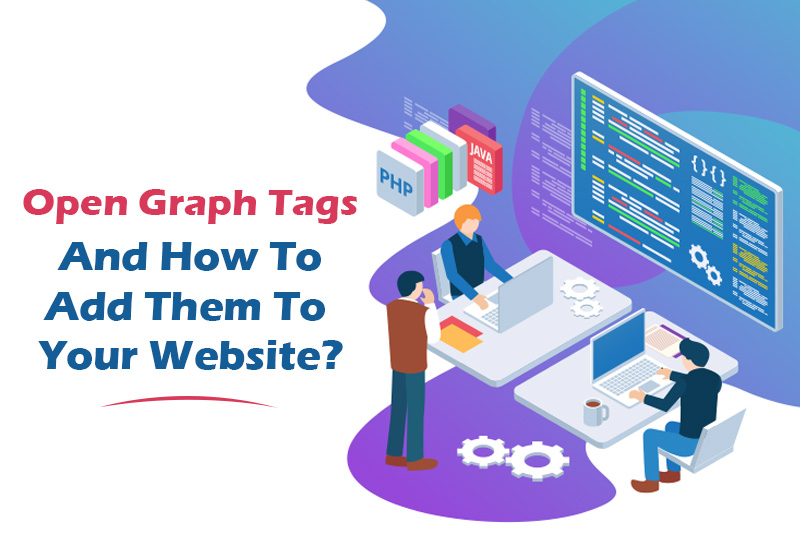What Are Open Graph Tags And How To Add Them To Your Website?
In this post, we’ll go over what are open graph tags, why they’re important, and how to use them. These tags are critical for the best representation of your website through social media sites in the age of searching, sharing, and embedding.
As content marketing is most likely an important part of your online marketing strategy, it’s critical that your URLs, like blog posts stand out when shared on social media platforms.
Although they have no effect on SEO, they do improve the display and overall usability of your website.
So, if you aren’t already using OG tags and images, it’s time to start! Let’s begin with the fundamentals.
What is Open Graph Tags in SEO?
Facebook invented Open Graph meta tags (or OG tags) and images in 2012 in order to properly display a URL preview on the platform.
Prior to the introduction of Open Graph tags, a user had no control over how their URL appeared when shared on Facebook. Besides that, adding code snippets (tags) to your web page can ensure that when shared on social media, your page will display an image, title, description, etc.
Facebook has its own Open Graph criteria, whereas other platforms (for example, Twitter) use different tags to display your URL in their feed.
Why Is It Important?
Essentially, Open Graph tags increase the “shareability” of your website. Likewise, if you want to drive traffic to your website, you will most likely share it on social media platforms.
You can also check for WordPress Seo Tips for gain traffic.
Open Graph tags and images produce a more engaging URL that typically includes an image, title, and description that informs the user about the page before they click on the link.
You have no control over what your web page URLs will look like in a social media feed without SEO open graph meta tags. Furthermore, users who see your URL are less likely to click on it if they don’t know what they’re doing.
Crucial Open Graph tags
Every web page should include four Open Graph tags and there are several others that are optional but still have an impact on how usable and shareable your site is. The following are the four most important Open Graph tags:
- og: title: This is usually the same as your SEO title tag unless you want it to appear differently in social media.
- og: type: What “kind” of website is it? Og: type can be a video, an article, a website, and so on.
- og: image: This tag should contain a link to the image you want to show.
- og: url: The page’s URL.
All of your pages should use these four tags, but there are a few additional Open Graph tags you can use:
- og: description: A one-sentence summary of your page or blog post.
- og: site name: Your website’s or app’s name.
- og: locale: The language and region of your page or blog post.
- og: updated time: When the page or blog post was last updated.
- og: audio: An audio URL for your page or blog post.
- og: video: A URL to a video for your page or blog post.
If you are thinking about how to add open graph tags, simply navigate to Page Settings > Social Image > Upload.
To add more OG tags and change the default settings, go to Page Settings > Advanced > Page Header Code Injection. Read the section on manually adding tags, then copy and paste the corresponding code there.
Important OG tags for Twitter
The term “Twitter Card” refers to one of the Open Graph tags that Twitter has adopted. Moreover, various Twitter card types optimize your content so that it appears correctly in the Twitter feed.
Adding the following HTML tags to your website will help it get shared on Twitter:
- twitter: card: A multimedia format that differentiates between video, image, and so on. (reverts to og: type)
- twitter title: Page title (fallback to og: title)
- twitter: description: Web page description (fallback to og: description)
- twitter: image: Showcase image on Twitter (defaults to Og: image)
- twitter:url: Shows the website’s URL (defaults to Og:url).
If the tags are not present on your site, the above types will fall back to your Open Graph tags. The following Twitter tags are unique:
- twitter: card: A multi-media format that distinguishes between different types of media (reverts to og: type)
- twitter title: Title of the page (fallback to og: title)
- twitter: description: Web page description (returns to og: description)
- twitter: image: Showcase image (default to og: image).
- twitter:url: Shows the website’s address (fallback to og:url).
These tags incorporate Twitter handles, which can increase engagement for your post.
Testing And Debugging OG Tags
You already know what are open graph tags, why they are important and how to use them. Testing and debugging are also critical components of OG tags.
After you’ve deployed all of the tags, double-check that they’re working properly and ready for sharing.
To accomplish this, make sure you use the following tools:
- Debugger for Facebook Sharing
- LinkedIn Post Inspector
- Twitter Card Validator
They all function in the same way. They take tags from the page and show how they appear when shared. Additionally, testing helps to prevent problems where OG tags are not correctly pulled or displayed.
The most important aspect is how the snippet appears. It’s not a big deal if you forget or set up less significant tags incorrectly. You can disregard warnings about unimportant tags such as fb: app id.
If something looks wrong and you update the tags, use the “Scrape Again” button to get new data. Apart from that, if the change does not appear after the crawl, use the Batch Invalidator to clear the cache and try again.
Repeat this procedure with the LinkedIn Post Inspector and the Twitter Card Validator to make sure your content looks the same on all networks.
Conclusion
We hope our blog on what are open graph tags gave you enough information on the subject. Open Graph is a beast in its own right and these are just a few of the fundamentals you’ll need to understand before you start optimizing your website for social media.
Aside from that, they’re important for your social media presence, but they don’t require a lot of time. Once you’ve got your tags in place, you can experiment with more advanced social media Open Graph tags as well as new ways to promote your business on social media.
Concentrate on mastering the fundamentals. That is to say, Debug add tags and check social media previews.
By using the best SEO tools and techniques, you can see which new and existing keywords your rivals are ranking for.
After that, you can add these terms to your own list, use the tools to find related keywords and even consider expanding into new markets. SEO tools like SEMrush can generate thousands of keyword ideas at once.
For more diverse articles, keep checking our website, MintSoftech. We offer a one-of-a-kind web development and marketing solutions for your company’s needs. Creating, designing and improving your website to ensure that your business grows exponentially is where our forte lies.
Our SEO team works tirelessly to optimize the entire website with all of the critical parameters, such as titles, headings, keywords and much more. We are a rapidly expanding company with thousands of happy and satisfied customers all over the world. When it comes to our client’s business needs, we have always proven to be an immensely valuable asset for them.











